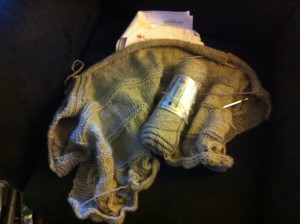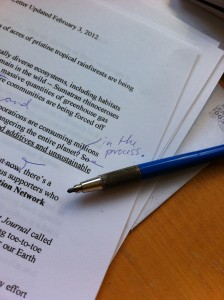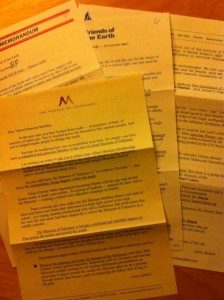The Big Rush
/ This past week we did a lot of rushing in my family. From piano to birthday celebrations, from haircut to dinner to middle school tour, from futsal to more birthday celebrations…it was a whirlwind.
As we rushed from activity to activity, I also did some rushing in my work life. And it got me thinking about how compressed our schedules have become in the last few years. What used to be a six week process of strategy-research-outline-draft-refine-review-perfect-mail has, too often, become a mad dash from outline to draft to review to mail -- with no time to strategize, thoroughly research, refine or perfect anything.
This past week we did a lot of rushing in my family. From piano to birthday celebrations, from haircut to dinner to middle school tour, from futsal to more birthday celebrations…it was a whirlwind.
As we rushed from activity to activity, I also did some rushing in my work life. And it got me thinking about how compressed our schedules have become in the last few years. What used to be a six week process of strategy-research-outline-draft-refine-review-perfect-mail has, too often, become a mad dash from outline to draft to review to mail -- with no time to strategize, thoroughly research, refine or perfect anything.
I see it all the time in news reporting. It's almost impossible to read a news article today without finding at least one typo. Even larger news outlets have become so quick to publish that they do their fact-checking after the story's out.
I am not a technophobe, and I don't hate progress. I do not want to go back to the days of stinky blueline proofs and camera-ready copy. I love being able to type, copy and paste my way through drafting and editing.
But I do wonder if we've hit the limit of how fast we can go.
Now, I know computers can and will do things faster. They'll continue to advance, and my children or grandchildren will likely wonder how we managed to get by with such clunky interfaces as keyboards and mice.
But true creativity and excellent, thoughtful work still take time.
Before I write a word, I like to take time to absorb the information and notice what bits and pieces stand out for me. If I do my research and then step away, my brain helps me out by sifting through things and organizing it all, so that when I do sit down to write, the words flow more easily.
And the same principle works once the copy's written. My best direct mail letters need rest before they're ready for the world. I have to step away for at least a day -- ideally for three or four days -- so that I can see clearly what needs work.
Yes, I can -- and often do -- turn things around on a dime. I've written, directed design and sent to the printer direct mail packages in the course of one business day. (With a lot of help from clients, graphic designers and printers!) And many of those packages were successful.
Some of them were not.
The truth is, my best, most enduring packages have been those that I was allowed to spend weeks on.
As you rush to meet deadlines, consider if there might be a value to slowing down. I'm a firm believer that done is better than perfect, but that doesn't mean I don't try to be as perfect as I can be -- and sometimes that means taking an extra day or two.
Sometimes, the best way to beat the rush is to slow down and let it pass you by.























